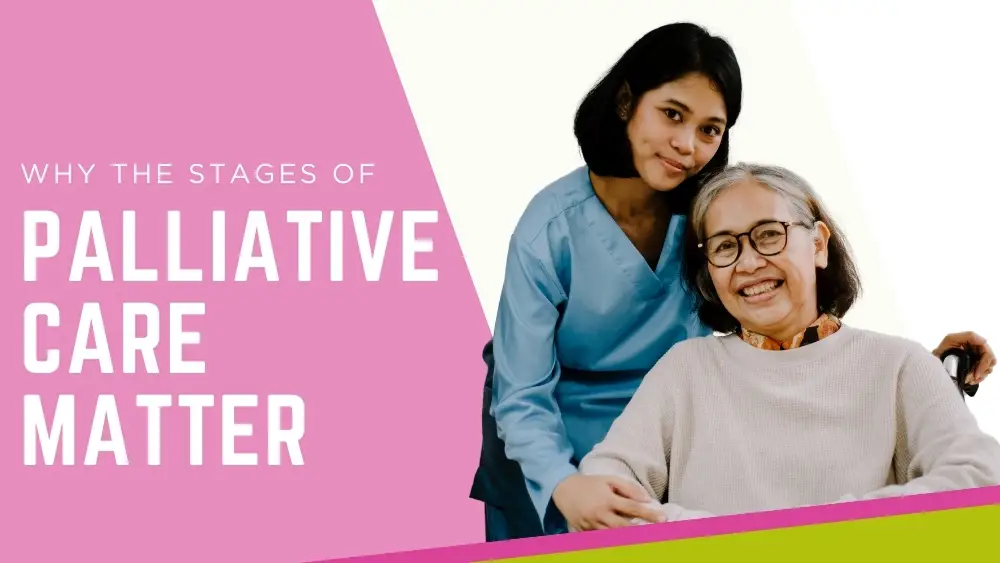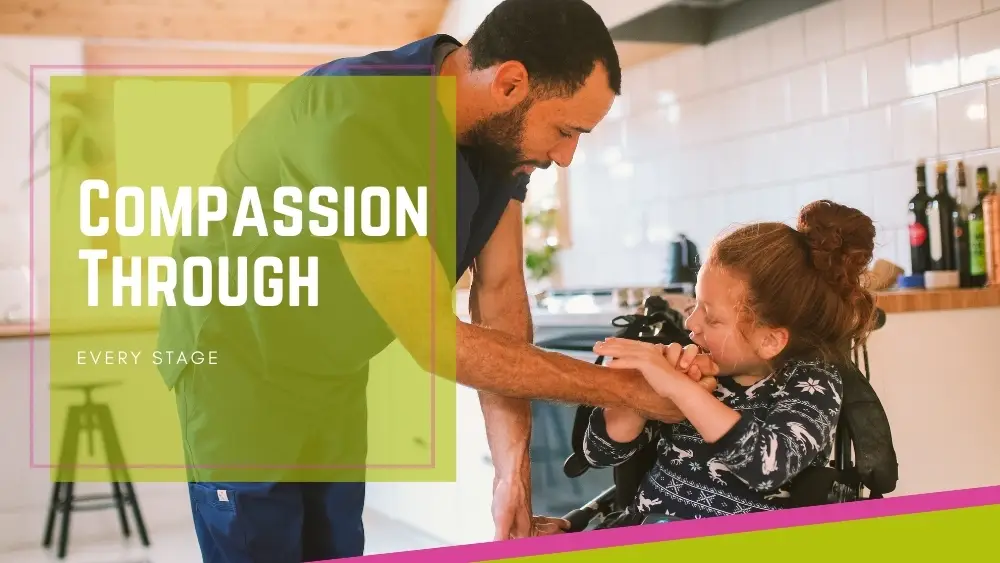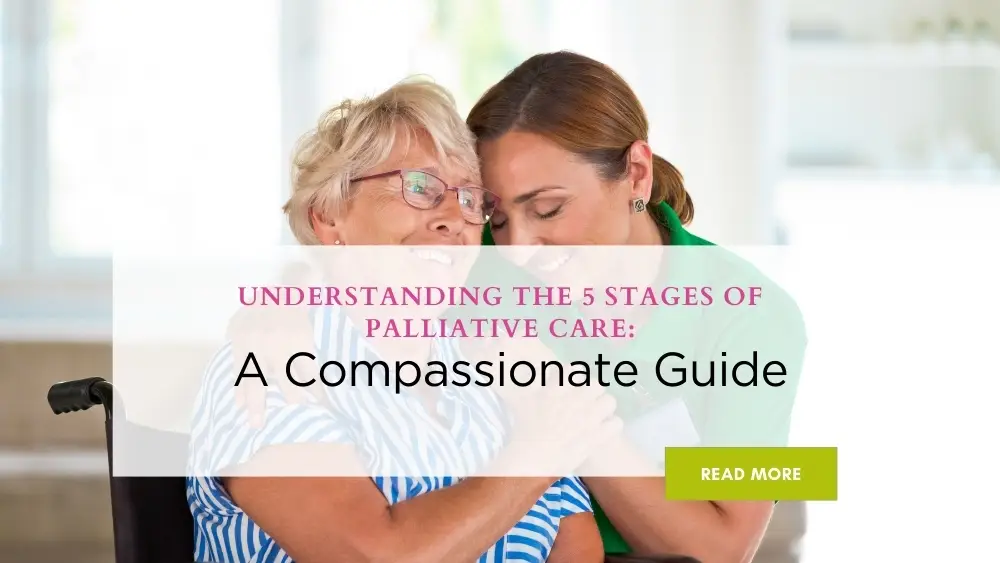Caring for someone with a serious illness can feel overwhelming—but that’s where palliative care comes in. Designed to provide comfort, dignity, and support, it’s not just about managing symptoms; it’s about enhancing quality of life. Whether you’re just starting this journey or supporting a loved one through it, understanding the 5 stages of palliative care can help you feel more prepared and reassured.
Each stage focuses on meeting different physical, emotional, and spiritual needs—offering guidance and care when it matters most. By knowing what to expect, you can make informed decisions with confidence and compassion. In this guide, we’ll walk you through each phase with clarity, warmth, and insight.
What Is Palliative Care?
Palliative care—sometimes called supportive care or comfort care—is a specialised approach focused on improving the quality of life for people with serious or life-limiting illnesses. It’s not about curing the condition but easing symptoms, managing pain, and providing emotional and practical support to both the individual and their loved ones.
A common question is: How is palliative care different from hospice care? While hospice care is typically offered near the end of life, palliative care can begin at any stage of illness—often alongside active treatment. It’s about living well, not just coping. Whether you’re dealing with cancer, heart failure, or another condition, this type of care provides relief and reassurance when you need it most.
Why the Stages of Palliative Care Matter

Understanding the stages of palliative treatment can make a world of difference—for both patients and their families. Each stage offers its own focus, from initial diagnosis to end-of-life support, helping everyone involved feel more prepared, informed, and supported.
By recognising the unique needs that arise at each phase, care can be better tailored—emotionally, physically, and practically. This personalised approach means loved ones receive the right support at the right time, making the journey feel less daunting and more compassionate. It’s not just care—it’s care that truly fits.
The 5 Stages of Palliative Care Explained
Palliative care is more than a service—it’s a journey. And like any journey, it has distinct phases. Let’s walk through the five stages of palliative care, each designed to support individuals and families with compassion, dignity, and personalised attention.
Stage 1: Initial Diagnosis and Early Care Planning
The first stage of palliative care begins at diagnosis. It’s a time of uncertainty and emotional weight, which is why early emotional support and open conversations are so important. During this stage, patients meet with their healthcare team to discuss medical options, treatment goals, and their personal wishes.
Live In Care Angels understands how overwhelming this phase can be. With a kind ear and experienced guidance, care planning starts here—laying a solid foundation for what’s ahead while ensuring patients and families feel heard, not rushed.
Stage 2: Active Treatment with Symptom Management
As treatment progresses, palliative care becomes more hands-on. This phase focuses on palliative care symptom control—managing pain, fatigue, nausea, and other physical symptoms. It often works alongside ongoing medical treatments like chemotherapy, dialysis, or physiotherapy.
But it’s not just about medication. Support also includes emotional well-being and practical help with daily tasks. In this stage, families often begin to feel a sense of relief knowing their loved one’s comfort is being prioritised alongside treatment goals.
Stage 3: Intensive Symptom Management
When symptoms become more persistent or complex, care transitions into comfort-focused treatment. Here, the emphasis shifts slightly—moving from curative efforts to improving quality of life through more holistic approaches.
This might involve nutritional support, mental health services, or alternative therapies like massage and music therapy. At Live In Care Angels, caregivers remain closely attuned to each individual’s evolving needs, adjusting care plans with empathy and respect. It’s a time to focus on dignity, presence, and genuine comfort.
Stage 4: Decline and End-of-Life Preparation
The end-of-life care stages are emotionally intense, often marked by physical decline and the need for deeper psychological support. It’s a sensitive period for both the patient and their family, filled with reflection, goodbyes, and heightened emotional needs.
Compassionate communication, spiritual guidance, and family involvement are key here. This stage ensures individuals are surrounded by love, peace, and dignity. Caregivers provide not just practical help but also a calming, human presence when it’s needed most.
Stage 5: Bereavement and Family Support
The final stage of palliative care extends beyond a person’s passing. Grief doesn’t follow a timeline, and families often need space, support, and someone to talk to. Bereavement care may include counselling, remembrance services, or simply having someone check in.
At Live In Care Angels, we know that care doesn’t stop at goodbye. Our team remains available to help loved ones process loss, honour memories, and begin healing. Because caring for someone includes caring for the people who love them.
Compassion Through Every Stage
Each phase in the 5 stages of palliative care plays a vital role in bringing comfort, clarity, and connection—both for the individual and their loved ones. From the moment of diagnosis to the final goodbye and beyond, compassionate care makes all the difference.
If you or someone you love is facing a serious illness, don’t wait. Reaching out early ensures you receive the right support, at the right time. Let care be more than a service—let it be a source of strength, peace, and heartfelt understanding.

